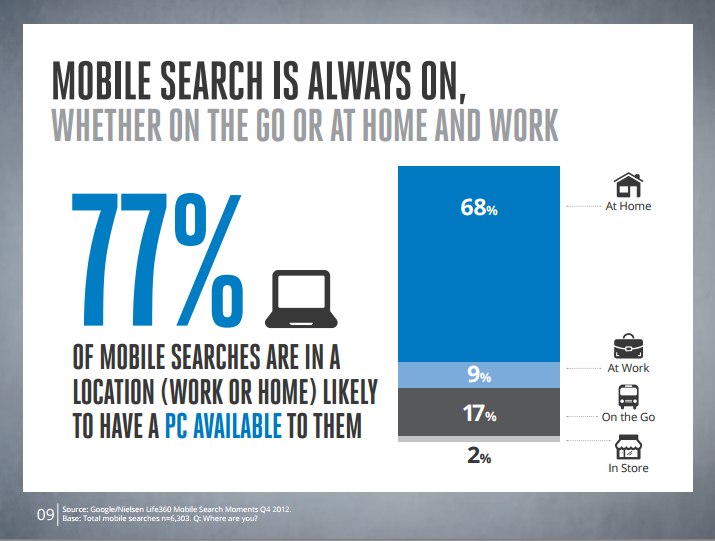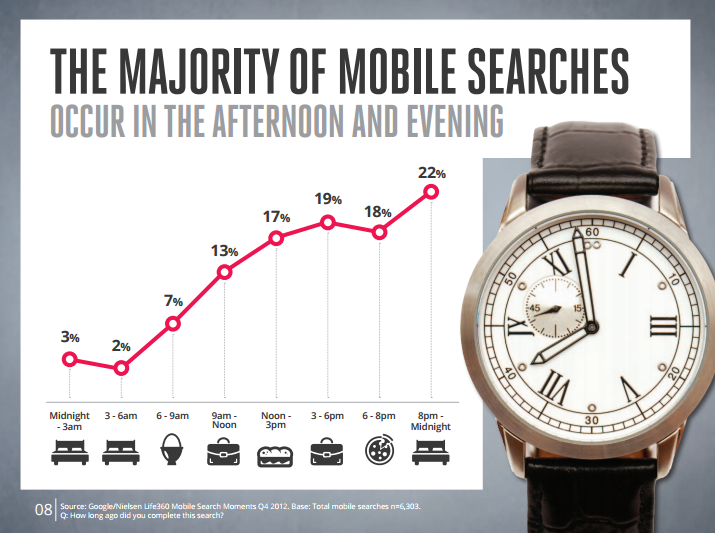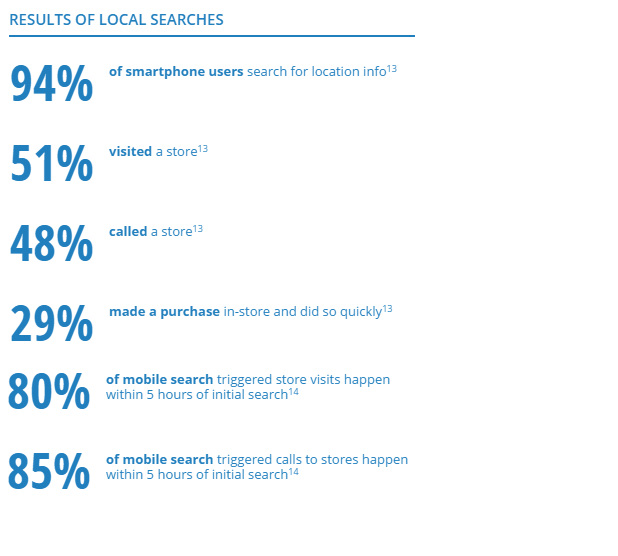Understanding the Mobile User
Key Takeaways
- Mobile users access the internet at all times and in all locations, often preferring the speed and convenience of mobile searches to desktop searches. Designers should ensure their mobile websites or apps are user-friendly and SEO optimized.
- Mobile users are more likely to engage with their devices after work hours, often in low light conditions. Designers should consider the visibility of their mobile designs in such conditions and potentially incorporate a more playful aesthetic.
- Mobile internet usage often occurs in short bursts, leading to shorter attention spans than desktop users. Designers should consider techniques beyond responsive design to increase engagement for mobile users.
- Mobile users often seek location-specific information and are more likely to convert from local searches. Designers should consider how to incorporate location-specific engagement into their mobile web design or app.
There was a time when the only form of Internet access was through desktop computers. Today, most users access the Internet from multiple devices – office desktops, home laptops, smartphones and/or tablets. As a result, people are accessing the Internet anytime, anywhere. Businesses are trying to understand this always-on behavior and leverage it to better connect with their markets.
In the design world, the normal is still for designers to carry the desktop website user experience to smartphones, perhaps making it responsive. But mobile changes everything. Design decisions need to adapt and embrace the change.
“Why should we ever build a mobile product that caters to the same needs of the desktop user?” — John Caine, Chief Product Officer at Priceline
Let’s take a look at some of the ways mobile internet usage is different.
Usage Locations
People use their smartphones on the go – while waiting for a friend, while on the train, at the dentist’s office – just about anywhere. This is a stark contrast from the days where you had a reliable Internet connection at work, and perhaps a painfully slow dial up modem at home that you preferred not to use.
Today, a large portion of users have 3G and 4G Internet connectivity on the their smartphones, 24×7. This constant connectivity opened up new business models and ways of interaction. According to a study by Google and Nielsen, 77% of all mobile searches happen at home, or at work, where users are likely to have a PC available.

The study found that speed and convenience were the primary reasons for mobile searches undertaken at home or work, as compared to going to a computer and logging in. 83% of users preferred their mobile device.
Take away for designers – Pay special attention to the user experience of your mobile website or app. Make sure it’s SEO friendly and viewers can quickly and easily find what they’re looking for.
Usage Time
According to data from Priceline, 70% of their mobile hotel bookings are made the same-day or day-before arrival. Mobile travelers book most often after 5 pm and 43% of Priceline’s Tonight-Only Deal users make their reservation while driving. That means their mobile bookings are mostly last minute searches, as people get closer to their destination. This matches Google & Nielson’s findings that the majority of mobile searches occur in the afternoons and evenings – a massive 40% of mobile searches are between 6pm to midnight.

This would indicate that users spend more time on their mobile devices after work – for socializing, shopping, entertainment and other non-work tasks. The time suggests that this mobile access is likely to be under low light conditions.
Take away for designers – Pay special attention to the colors and contrast on your mobile designs, especially how they appear under low light conditions. Does the data above also indicate mobile designs can do with an extra bit of playfulness as compared to corporate looking, straight desktop designs?
User Engagement
Have you ever paid attention to your own smartphone usage patterns? When do you use it the most? How much attention do you pay to your mobile device? If you’re like most people, you surf the Internet through your mobile, only when you need something. This is often while we’re engaged in another task.
Mobile internet access is usually in short bursts of ‘in between time’ – while watching TV, while waiting in queue, while waiting for food, or on the bus. That means attention spans are short, way shorter than in the desktop world.
User engagement data from Google shows that mobile visitors spend only about one-fourth the time on websites as compared to desktop visitors, visit only about ⅓ the number of pages, and have 2x the bounce rate. That’s a significant difference in engagement metrics.
Take away for designers – Going with a responsive design may not be the best solution. The design needs to leverage other techniques and usage modes to increase engagement for mobile users.
The Local Mobile Consumer
Smartphone users use their phone to check for nearby stores, hotels, restaurants, deals, hangouts, friends etc – to check who and what is around the corner. It’s a completely new way of thinking and doing things that wasn’t possible in desktop days. Mobile users seek out location specific information, while they’re on the go.

What these numbers mean is that consumers are using their mobiles to perform targeted, intention specific local searches, that convert much better than other platforms. So a mobile user searching for restaurants, is more likely to look for one nearby and call for a reservation, or walk into the restaurant, than someone searching on desktop. The same holds for most other kinds of retail. This is a breakthrough for marketers and retailers and many are coming up with new ways to build on this location specific engagement.
For example, The Corcoran Group, a premier real estate firm, is leveraging this local search phenomenon by helping their mobile users with location specific information, on-the-go. They found that when looking up a home, buyers and renters were also looking for information on restaurants, shops and schools nearby. Corcoran leveraged their agents’ extensive knowledge of the neighborhoods to build a comprehensive list of local tips and recommendations, and shared these with prospective buyers and renters over their mobile channels, even before the actual home buying or rental process began.
Take away for designers – Make an extra effort for your mobile users. Understanding their browsing and search patterns, even while away from your website, can provide key insights into serving them better. Find a way to work those into your mobile web design or app.
Showrooming – The Price Challenge
Instant access to the Internet has given rise to ‘Showrooming’, where shoppers visit brick and mortar retail stores to see and feel the product, but then buy online via desktop or mobile. While checking out a product at a physical store, customers can compare prices with other outlets and online retailers via their phone. Google has a detailed study on how in-store shoppers are using mobile devices. They found 80% of smartphone users use their phones for shopping research, and of that, 80% do this research in-store.
Take away for designers – Understand that in the retail space, customers’ buying decisions are heavily influenced by their mobile searches and other mobile experiences, even while in-store. Look at ways to make their in-store mobile experience rewarding enough to convert to in-store sales, or make it super easy for them to convert online.
Summary
The mobile landscape has changed significantly over the last decade and continues to evolve. Both large and small businesses are trying to leverage the mobile experience to build customer engagement and conversions.
As designers, we need to understand the evolving mobile consumer and leverage this in our app and mobile web designs, preferably from day one. If you haven’t yet worked out your mobile web strategy, here is some advice to get you started. Depending on your target audience, you may even want to consider a mobile first approach.
Have you ever worked the specifics of mobile user behavior into your designs? What worked for you and what didn’t? Share with us in the comments below.
Frequently Asked Questions about Understanding Mobile Users
What are the key characteristics of mobile users?
Mobile users are typically on-the-go, seeking quick and efficient access to information. They often use their devices for browsing, social media, shopping, and entertainment. They value convenience and speed, and they expect a seamless, user-friendly experience. Mobile users are also more likely to use apps than desktop users, and they often use their devices at different times of the day, in different contexts, and for different purposes.
How does mobile user behavior differ from desktop user behavior?
Mobile users often have different behaviors and expectations compared to desktop users. They are more likely to use their devices in short bursts, often multitasking or using their devices while on the move. They also expect websites and apps to be optimized for mobile use, with easy navigation, fast load times, and a user-friendly interface. In contrast, desktop users often spend longer periods of time online and may be more patient with slower load times or more complex navigation.
Why is understanding mobile user behavior important for businesses?
Understanding mobile user behavior is crucial for businesses because it can help them optimize their websites and apps for mobile use, improve user experience, and ultimately drive more traffic and conversions. By understanding how mobile users interact with their devices, businesses can tailor their content, design, and marketing strategies to meet the needs and expectations of this growing audience.
What are some common challenges in understanding mobile user behavior?
Some common challenges in understanding mobile user behavior include the diversity of devices and operating systems, the variability in user behavior across different contexts and times of day, and the difficulty in tracking mobile users across different platforms and devices. Additionally, mobile users often have different privacy concerns compared to desktop users, which can make data collection and analysis more challenging.
How can businesses better understand their mobile users?
Businesses can better understand their mobile users by using analytics tools to track and analyze mobile user behavior, conducting user research and surveys, and testing their websites and apps on different devices and operating systems. They can also stay up-to-date with the latest trends and research in mobile user behavior, and consider working with experts in the field.
What is the impact of mobile user behavior on SEO?
Mobile user behavior can have a significant impact on SEO. Google and other search engines prioritize mobile-friendly websites in their search results, so businesses that optimize their websites for mobile use can improve their search rankings. Additionally, mobile users often have different search behaviors and preferences compared to desktop users, which can influence keyword strategy and content optimization.
How does mobile user behavior influence app development?
Mobile user behavior plays a crucial role in app development. By understanding how users interact with their devices, developers can design apps that are user-friendly, intuitive, and meet the needs and expectations of mobile users. This can include considerations around navigation, load times, functionality, and design.
What are some trends in mobile user behavior?
Some trends in mobile user behavior include the increasing use of mobile devices for shopping and entertainment, the growing popularity of mobile apps, and the shift towards mobile-first or mobile-only internet use. Additionally, mobile users are increasingly expecting a seamless, personalized experience across all their devices.
How does mobile user behavior vary across different demographics?
Mobile user behavior can vary significantly across different demographics, including age, gender, location, and income level. For example, younger users may be more likely to use their devices for social media and entertainment, while older users may use their devices more for information and communication. Understanding these differences can help businesses tailor their strategies to different segments of their audience.
How can businesses adapt to changes in mobile user behavior?
Businesses can adapt to changes in mobile user behavior by staying up-to-date with the latest trends and research, regularly testing and updating their websites and apps, and listening to feedback from their users. They can also consider working with experts in the field, and investing in tools and technologies that can help them better understand and meet the needs of their mobile users.
Once upon a time, Richa was a savvy techie & manager, in the semiconductor software industry. After her miraculous escape and recovery, she now works from her garden, creating websites, writing about technology, business & entrepreneurship; and helping others escape the cubicle lifestyle.
Published in
·Android·App Development·Design·iOS·Mobile·Mobile Web Development·Responsive Web Design·Wearables·September 2, 2014



